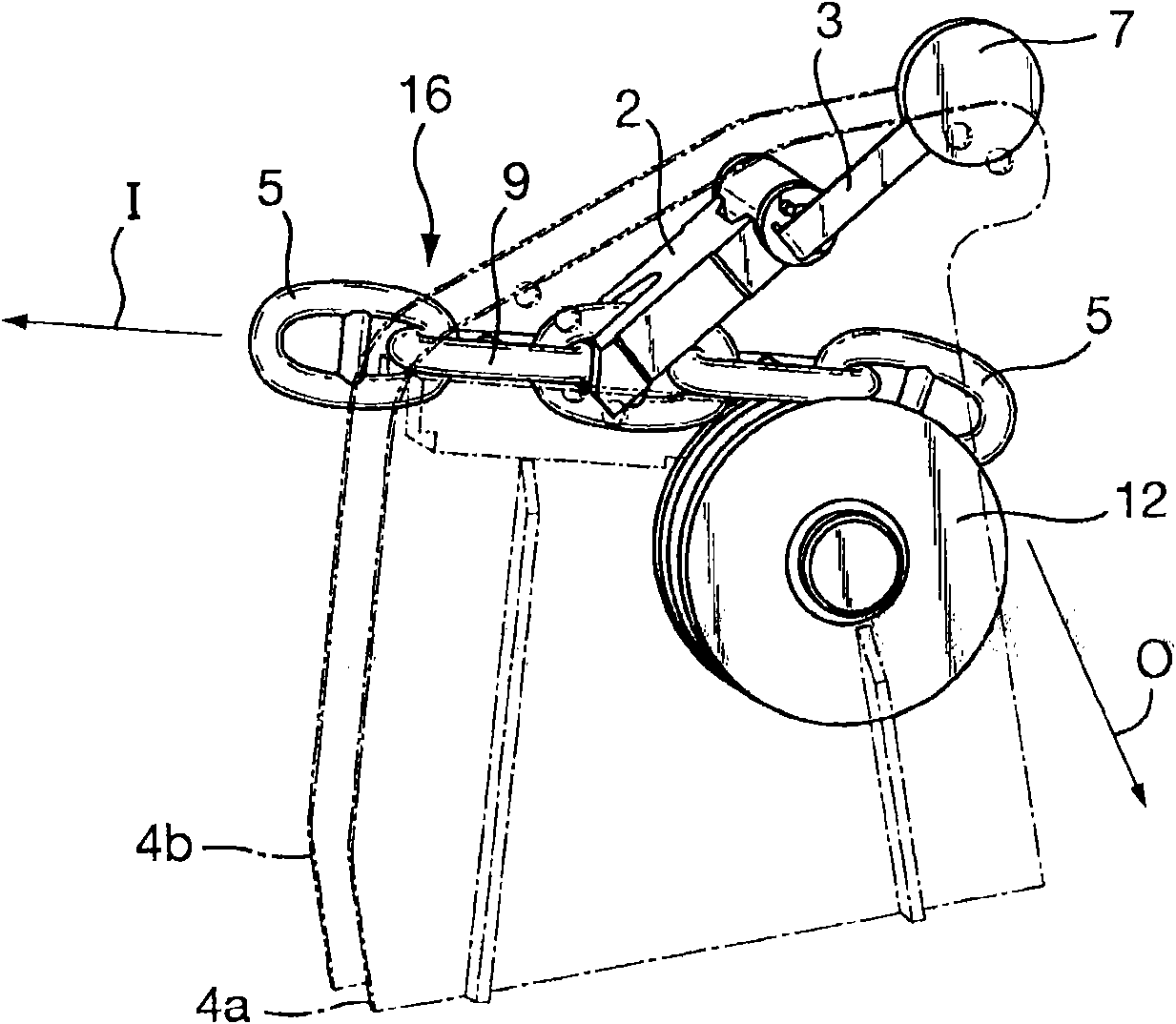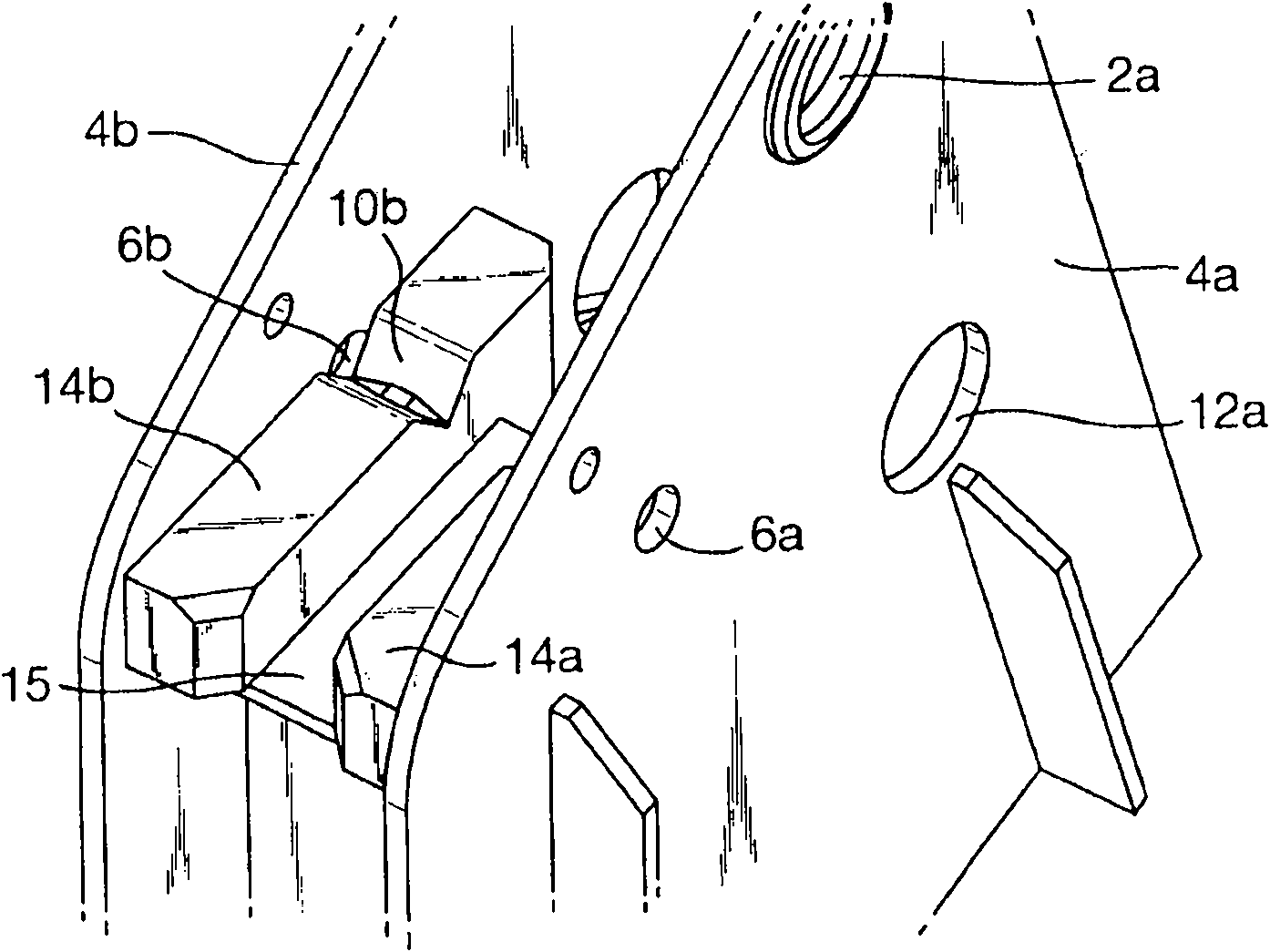Chain brake device
A technology of braking equipment and equipment, which is applied to ships and other directions, can solve problems such as hydraulic system damage and strong waves, and achieve the effect of avoiding transformation
- Summary
- Abstract
- Description
- Claims
- Application Information
AI Technical Summary
Problems solved by technology
Method used
Image
Examples
Embodiment Construction
[0031] Referring to the attached drawings, first of all figure 1 and figure 2 , the chain braking device according to the invention comprises a frame which in the described embodiment consists of two upstanding plate elements 4a, 4b which are attached at their lower ends to the deck of the ship by conventional means ( not shown). This device replaces conventional chain brakes and is therefore welded to the deck between the windlass and the hawse barrel. Anchor chain 16 (only a portion of which is shown) extends through the chain braking apparatus, in the inboard direction towards the winch (not shown), indicated by the arrow marked "I", and in the outboard direction towards the hawse barrel ( not shown) and the sea, shown by the arrow marked "O". Thus, when the anchor chain is released from the ship, it moves in the "O" direction, and when it is pulled back, for example in connection with the lifting of the anchor, the chain moves in the "I" direction. These operations ar...
PUM
 Login to View More
Login to View More Abstract
Description
Claims
Application Information
 Login to View More
Login to View More - R&D Engineer
- R&D Manager
- IP Professional
- Industry Leading Data Capabilities
- Powerful AI technology
- Patent DNA Extraction
Browse by: Latest US Patents, China's latest patents, Technical Efficacy Thesaurus, Application Domain, Technology Topic, Popular Technical Reports.
© 2024 PatSnap. All rights reserved.Legal|Privacy policy|Modern Slavery Act Transparency Statement|Sitemap|About US| Contact US: help@patsnap.com










